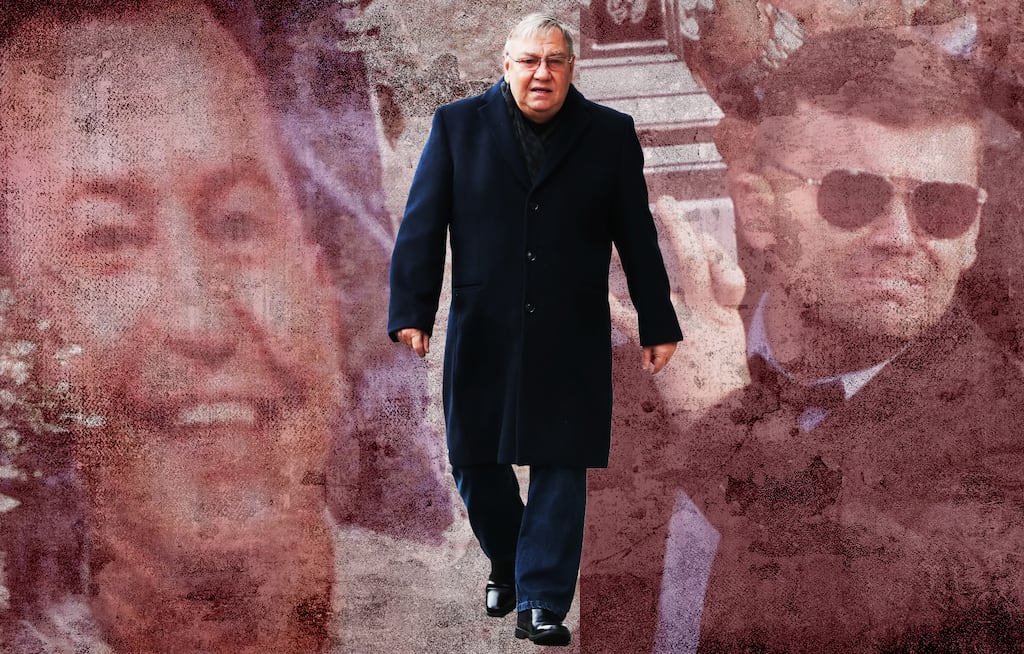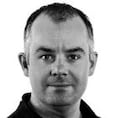“If it wasn’t for his son-in-law and his sons, very few people would know his name. And the fact he died wouldn’t be in the newspapers. He wasn’t exactly a criminal mastermind, let’s put it like that.”
That was the verdict on James “Jaws” Byrne this week from an experienced Garda officer who has spent decades of his career investigating organised crime.
Byrne snr, a career criminal from Crumlin, Dublin, died last weekend, aged 77 years, after a long illness. His death notice on RIP.ie says he died “peacefully, surrounded by his loving family in the kind care of the staff of Tallaght University Hospital”, and gave details of his funeral Mass on Friday at 12 noon in St Catherine’s Church, Meath Street, followed by burial in Mount Jerome Cemetery. It said: “May Jemmy rest in peace.”
His son, David (34), was shot dead by the Hutch gang in the notorious attack on the Regency Hotel, north Dublin, in February 2016.
READ MORE
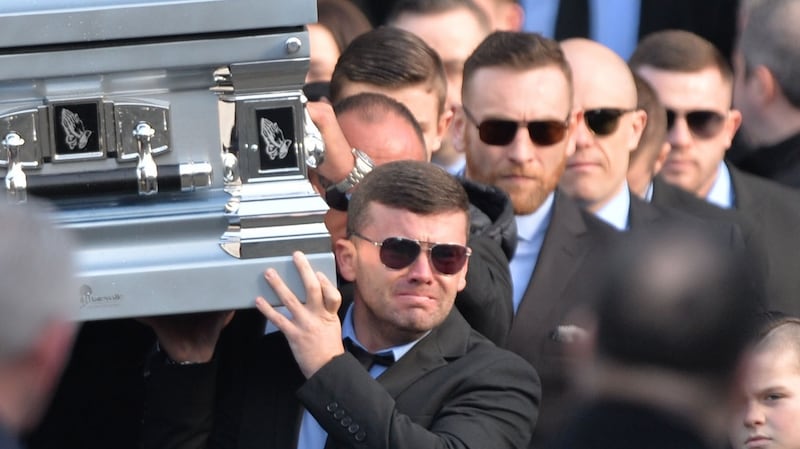
Another son, Liam “Bugsy” Byrne (43), was the leader of the “Byrne organised crime group”. It effectively ran the Kinahan cartel’s Irish operation. Byrne snr’s son-in-law, Thomas “Bomber” Kavanagh (56), ran the Kinahans’ British operation.
Byrne snr is one of the few criminals targeted twice by the Criminal Assets Bureau (Cab). He was of the same generation as notorious criminals Martin “The General” Cahill and Martin “The Viper” Foley, and was an associate of theirs on the streets of Crumlin in their younger days.
Conversations with sources who knew Byrne snr have unearthed a mixed picture since the pensioner’s death last Saturday. He was a criminal in his own right, who significantly profited from organised crime, leading a lavish lifestyle for decades. Yet gardaí say he was “never gang-leader material”.
“He was a Mickey Mouse criminal, a blagger,” one source told The Irish Times. “You’re talking about crimes like dealing in dodgy passports, cheque fraud. There was money in things like stolen cheques, yes. But it was never top-end stuff. He was a violent thug.”
[ Liam Byrne: Daniel Kinahan’s lieutenant in DublinOpens in new window ]
Very few people knew Byrne snr’s name, save for older journalists and gardaí, before he began appearing in the media routinely described as “the father of gang leader Liam Byrne” just more than a decade ago. But the fact he was a Cab target in the early years of the bureau is proof he was a criminal in his own right.
When he eventually settled his first case with the Cab, in 2004, he had at least 14 criminal convictions for theft, receiving stolen property, forgery and assaulting gardaí.
In 1991, the father of six – three sons and three daughters – was caught at his home on Raleigh Square, Crumlin, with 1,000 cheques belonging to the Revenue Commissioners. Four years later, he was before the courts charged with handling a large batch of stolen cheques, bank drafts and a passport. He was jailed for three years.
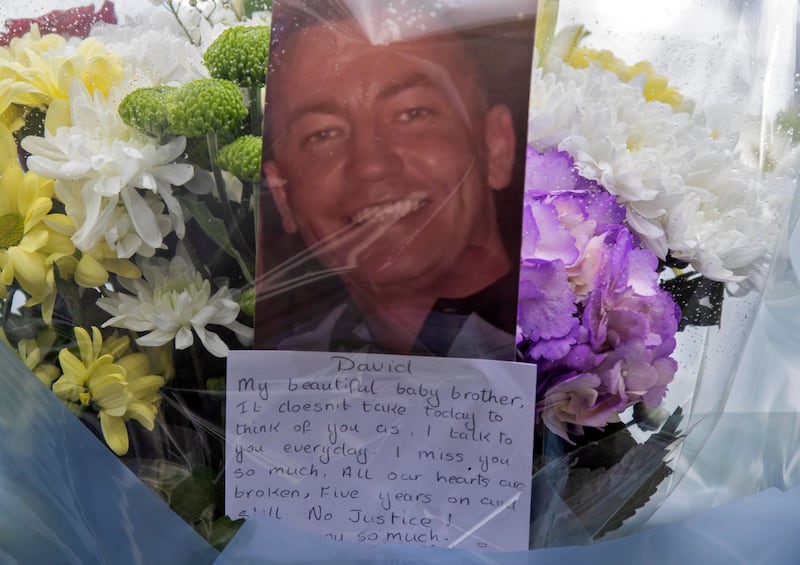
While still a “nobody” in the Dublin criminal landscape on his release from jail, the turn of the decade from the 1990s to the 2000s was about to bring great wealth to Byrne snr and his family.
But before his son, Liam Byrne, became Kinahan “top boy” in Ireland, Byrne snr tried every trick in the book to keep him out of jail.
In 2020, Liam Byrne beat former League of Ireland player Trevor Donnelly unconscious with a baseball bat in Crumlin. The victim’s girlfriend, Jennifer Doyle, witnessed the attack. After Liam Byrne knocked out Donnelly with the bat, he told his girlfriend: “Tell him if he wakes up it’s bullets.”
When Donnelly and Doyle decided to go to the gardaí and give statements, a four-year suspended sentence imposed on Liam Byrne just months earlier, for armed robberies on shops, was activated. Byrne was furious. At first he offered to pay Doyle €50,000 to withdraw her statement. Then her life was threatened and plans made to hire a man to shoot her.
But Doyle persisted and gave her evidence. It resulted in Liam Byrne getting 2½ years for the assault on Donnelly, to add to the four-year armed robbery term.
Byrne snr was charged with two offences of “threats to kill or cause serious harm” to Doyle in 2021 as she prepared to give evidence. The case never went to trial.
One case against Byrne snr that did run to a conclusion in court was taken by the Cab and the Revenue Commissioners in the early 2000s. He was targeted for taxes he owed on undeclared and unexplained income. Despite being on the dole, he owned his own home, mortgage-free, on Raleigh Square.
He paid the Revenue Commissioners €208,400 in 2004 after a tax assessment of €378,612, as well as €43,353 in unemployment assistance he was not entitled to. It was a blow, but he would weather the storm with money – drugs money – from his son Liam.
The Byrne organised crime group
When Byrne snr’s son, Liam, was jailed in 2000, Christy Kinahan was being released from prison, having served time for cheque fraud offences, around the same time. Kinahan was an associate of Byrne snr and his eldest son, Daniel Kinahan, had been close to Liam Byrne since their youth.
On his release from jail, Kinahan snr – who had a history of modest drug dealing in Dublin in the 1990s – relocated to southern Spain to start a drugs wholesale business; the Kinahan cartel.
Liam Byrne remained in prison between May 2000 and November 2004. The gang of young drug dealers he ran with had a row over who was to blame for a consignment of drugs being seized by gardaí in early 2000. That argument quickly became the Crumlin-Drimnagh gangland feud. Sixteen murders were linked to it – some indirectly – by the time it ran its course over a decade later.
When intelligence documents were drawn up for Operation Anvil, to tackle the gangs early in the feud, Byrne snr was named as an associate of key players. He was also named as an associate of Christy Kinahan snr. The presence of Byrne snr’s name in the intelligence was significant. A former fraudster and blagger, he was now in the drug dealing milieu as the cocaine trade was exploding during the so-called Celtic Tiger era.
By the time Liam Byrne was released from jail, in November 2004, the faction he was aligned to had long gained the upper hand in the Crumlin-Drimnagh feud. It was led at that point by Freddie Thompson, Liam Byrne’s cousin. It was taking receipt of the Kinahans’ drug deliveries to Ireland and was responsible for distributing the drugs to other gangs nationwide.
However, when Thompson fell foul of the INLA, around 2007-2008, he was forced to flee the Republic. In his absence, Liam Byrne took control of the Crumlin-based gang. He essentially defaulted into that leadership role for the Kinahan cartel in Ireland at the same time his brother-in-law, Thomas “Bomber” Kavanagh, was running the cartel’s British operation.
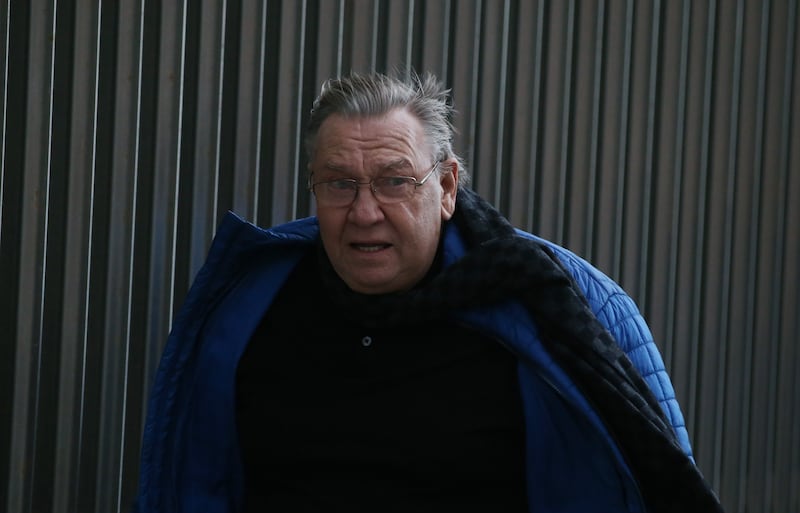
Byrne snr took enormous benefits from his son and son-in-law being the key Kinahan players in Ireland and Britain. Those benefits included travel all over the world, access to luxury vehicles from cartel-controlled garages laundering drugs money in Ireland and Britain, and also receiving plenty of that cash for himself.
As the Kinahan cartel got stronger and richer, so too did Liam Byrne and his associates in Dublin. They were referred to by the Garda as the “Byrne organised crime group”. And Byrne snr was no spectator. He was involved.
“He was a fixer for them and the suspicion was, from the start, he was an aid to Kavanagh and also to his son. He got them anything they wanted,” said one Garda source of Byrne snr’s role from the early 2000s.
One of the things they wanted – especially the Kinahans – was passports. These were genuine Irish passports, issued by the passport office, but fraudulently obtained. They facilitated travelling under assumed identities. The passports carried the holder’s photograph but with the names and other details of other men; usually vulnerable people who had never applied for a passport before and were unlikely to ever do so.
“He seemed to have a talent for procuring those,” said one source, of Byrne snr’s role in sourcing passports for cartel personnel. “And passports were really valuable, especially for the Kinahans once the investigations into them in Ireland and Spain really heated up.”
Byrne snr was spotted abroad in the company of major criminals during the big years for his son and son-in-law. He was a regular visitor to the Paparazzi Bar in Puerto Banus in southern Spain. It was a magnet for Irish gangland when owned by Peter “Fatso” Mitchell, a former John Gilligan drugs gang member now in prison in Wales for drug crime.
Byrne snr, and his wife Sadie, were also photographed with veteran Dublin criminal Gerry Hutch in a bar in Lanzarote in 2014. At that time, Hutch’s nephew, Gary Hutch, was heavily involved in the Kinahan cartel. But when he fell out with Daniel Kinahan, Gary Hutch tried to have Kinahan murdered. The shooting was botched and Hutch was himself shot dead in Spain by the cartel in September 2015.
That murder saw the Kinahan-Hutch feud explode. There would be no more drinking sessions with Gerry Hutch for Byrne snr in Lanzarote, or anywhere else.
The next victim in the feud was Byrne snr and Sadie’s youngest son, David Byrne. The Hutch gang, seeking revenge for Gary Hutch’s killing, tried to ambush Daniel Kinahan at the Regency Hotel in February 2016. But they botched the attack and David Byrne was shot dead instead.
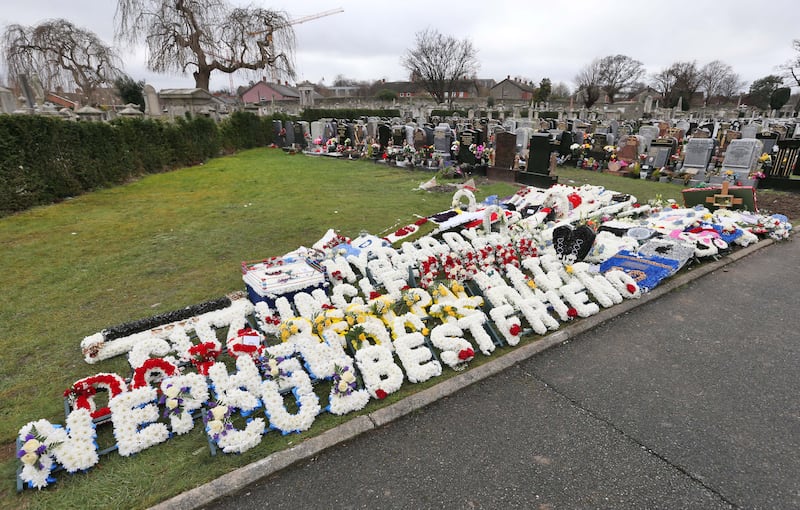
Garda sources said once his son was murdered, Byrne snr wanted revenge and stoked the feud in the following years. He had direct dealings with some of the gunmen paid by the Byrne-Kinahan alliance to shoot the Hutches.
Michael Carroll, of Bride Street, Dublin 8, tried to shoot dead John Hutch, a brother of Gerry Hutch, in March 2017, and is currently serving 22 years for his crimes. Byrne snr met Carroll in a Dublin bar after the failed murder bid, for what gardaí believe was a debrief about the shooting.
Criminal Assets Bureau and downfall
In 2017, as the Kinahan-Hutch feud raged in Dublin, Liam Byrne and a group of his associates – along with his parents, James and Sadie – were all targeted in a Cab case. It yielded almost €3 million in assets. That included Liam Byrne’s home on Raleigh Square – a former council house that had undergone €750,000 in renovation works. The property was next to his parent’s home and on a corner of the square where the Byrnes and their associates lived in five houses, dominating the area much like the East End villains of old in London.
As the Cab case rumbled on, the Byrne gang in Dublin faced a Garda onslaught due to its involvement in the Kinahan-Hutch feud and was crushed. Freddie Thompson is serving life in prison for the Kinahan-Hutch feud murder. Many of Thompson’s and Liam Byrne’s associates and underlings in Dublin are also locked up for feud crimes.
Liam Byrne faces a firearms conspiracy trial next week in London’s Old Bailey. One of his co-accused is Thomas Kavanagh, already serving 21 years for importing the Kinahans’ cocaine into Britain.
A reflection of the high roller, but also squalid, family-based gang Byrne snr was patriarch to – though never the boss of – is the current, very different, status of two of his grandsons.
One of them, Jack Kavanagh (23) – the son of Thomas Kavanagh – is currently in prison in Spain fighting extradition to Britain where he faces firearms charges. The other grandson, Lee Byrne (25) – the son of Liam Byrne – is currently in a long-term relationship with Lilly-Ella Gerrard, who happens to be the daughter of former Liverpool captain Steven Gerrard.
Gardaí were stunned at the Byrnes’ connection to the family of the millionaire and legendary sporting figure. But there is no suggestion whatsoever Gerrard, his daughter or Lee Byrne are involved in crime.
Though he never made much of a mark himself, Byrne snr lived the high life for years; winched out of the world of mediocre for-profit crime to the top of Dublin organised crime by his son and son-in-law.
When Gerry Hutch was put on trial – and acquitted – last year for the murder of David Byrne, a secretly recorded conversation between Hutch and former Sinn Féin councillor Jonathan Dowdall was played in court and referenced Byrne snr. It implied Byrne snr was influential enough, as patriarch within the Byrne group, to help bring an end to the feud and may be motivated to do so to keep his other son, Liam, alive.
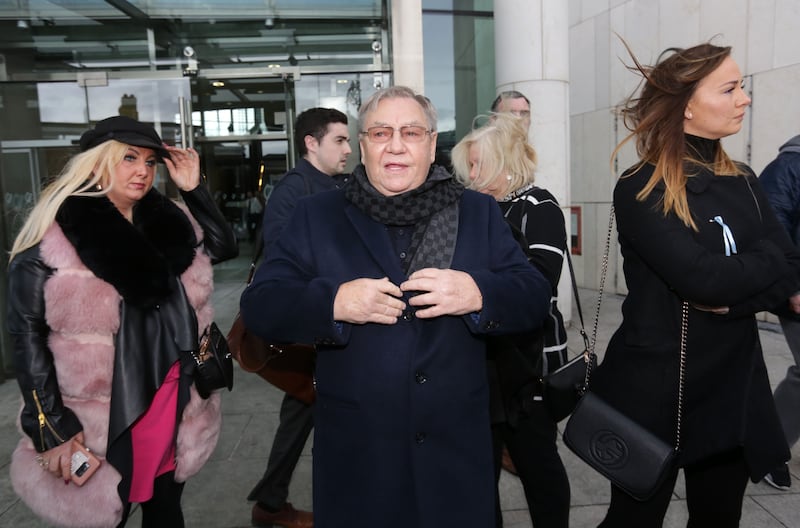
“It’s gonna be Jemmy Byrne’s decision, ya know,” Hutch told Dowdall. “Well it’d be like, ‘want to lose another son Jemmy’, ya know?”
Some of the detail of the second Cab case he was targeted in – just after the Regency attack – sums up that big blast of the good life he enjoyed before everything crumbled. Forking out €208,400 to the Cab and Revenue in 2004 clearly hadn’t done much to slow his gallop.
In the 2017 Cab case, Byrne snr offered no explanation for where his money came from, claiming a Rolex Oyster watch, valued at €35,200, was gifted to him. It was found by the Cab in his Raleigh Sq home, lavishly extended and decorated, where €22,000 in cash had been found lying around during a search in 2001.
Byrne snr sold one of his properties to his daughter, Maria, in 2003 for €100,000. He claimed he gifted another house to Maria “for love and affection” in 2015, though the Cab said he sold it for €80,000. The assets – the ones the Cab could find, that is – knocking about in Byrne snr’s life were very impressive for a man whose last legitimate job was in 1974.
- Sign up for push alerts and have the best news, analysis and comment delivered directly to your phone
- Join The Irish Times on WhatsApp and stay up to date
- Listen to our Inside Politics podcast for the best political chat and analysis
